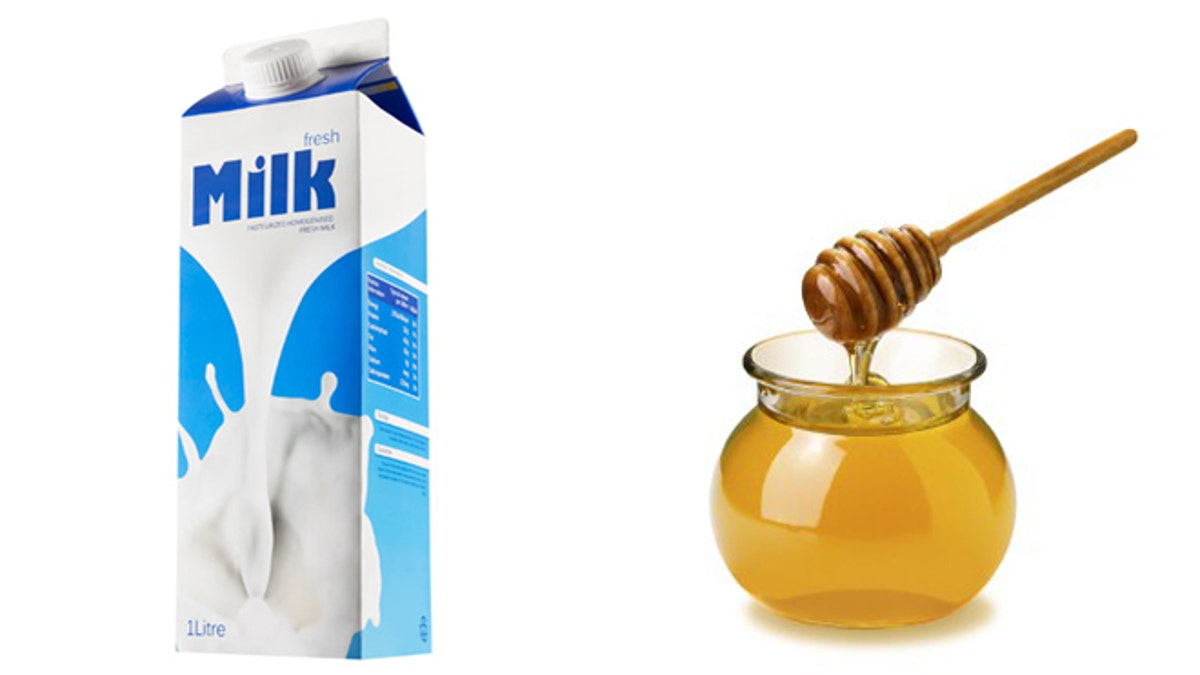
For those people who believe "ignorance is bliss," this story may not be for you: The United States Pharmacopeial Convention (USP) just released a new set of food frauds on their extensive database, and it kind of makes us want to never grocery shop again.
Some of the products listed are fairly obvious (seafood, for example), but popular tampered-with products also include milk, spices, and lemon juice.
So what exactly is food fraud? "Food fraud means that somebody adds something or replaces a perfectly safe ingredient with essentially something unknown," Markus Lipp, senior director of food standards at USP, says. This replacement is illegal, but could go undetected.
"Any risks, hazards, or problems that occur will only depend on how knowledgable and ethical the person who committed that fraud is," Lipp says. "If they think it’s safe but in fact it’s not safe, then everyone else will suffer the consequence."
We've scoured the database for 10 common pantry staples that have been at the center of food fraud reports in the past 30 or so years, with some as benign as adding sugar to lemon juice, and other as dangerous as adding plasticizers to fruit juices and jams.
While it's nearly impossible to dissect everything you buy from a grocery store, Lipp says common sense will get you halfway to purchasing true, honest ingredients. "There is the old adage if it’s too good to be true, then maybe it’s too good to be true and it’s in fact not true," Lipp says. "Say I find a bottle of extra-virgin olive oil that is significantly cheaper than anything else on the market. Then I may want to ask some questions."
Luckily, supermarkets and producers do provide ways to contact them and ask questions, via websites and customer service. "Companies, whether big or small, have a very strong interest for repeated business," Lipp says. Of course, they also have an incentive to make money, and, "where there’s money to be made, most likely someone will attempt to make that money whether it’s legal or illegal."
For the United States, Lipp says, our food standards are a bit higher than a developing country's, but sometimes fraud still happens. "The only reason why we enjoy these levels is because people care, and they have been caring," Lipp says, "and ongoing vigilance is required to keep that level of safety and maybe improve it when necessary."
Milk
The classic kids’ bedtime drink has been found to be watered down with cane sugar, water, and urea in places like India, while milk fat has been replaced with vegetable oil in South America. The worst cases involved milk adulterated with detergent, formaldehyde, and in one instance, machine oil.
Honey
It makes sense that honey, with the depleting population of bees, will gradually become more expensive, so producers looking to make an extra buck may mix subpar honey with beet sugar, sugar syrup, and high-fructose corn syrup. Interestingly enough, however, the most common cases of adulteration in 2012 involved non-geographically specific honey migrating into small-batch honeys. So a bottle of tupelo honey might not all be tupelo, and that local honey might not be too local after all.
Ground Coffee
Ground coffee is perhaps the easiest to tamper with, as studies have discovered twigs, roasted barley, soy beans, chicory powder, rye flour, potato flour, acorns, roasted corn, cereals, and ground parchment in all sorts of coffee. Fortunately, there’s one easy save: buy whole coffee beans and grind them yourself. Your taste buds will also benefit.
Olive Oil
Olive oil, especially extra-virgin olive oil, has been a notoriously tricky product. We’ve read instances of virgin olive oil being mixed with extra-virgin, or worse, supposedly extra-virgin olive oil being replaced with less expensive vegetable oils, like palm oil, sunflower, or sesame, and in most cases, hazelnut oil. Other cases involve non-Italian bottles posing as Italian extra-virgins.
In one particularly terrible case in China, olive oil was even replaced with "gutter oil," the remaining oil after cooking. In another case, extra-virgin oil was partially replaced with lard. Lovely.
Seafood
Seafood mislabeling has long been a problem in the industry, especially since nowadays, a fish is hardly served or sold whole. In fact, late last year Oceana released a study finding that 39 percent of seafood samples in New York City are mislabeled.
The most common case of mislabeling involves escolar, which is often sold as white tuna or butterfish. Escolar, which is banned in Italy and Japan, can actually cause food poisoning, with its oily textures and wax esters. Sometimes, it is even labeled as albacore.
Puffer fish was also found to be labeled as monkfish (probably to evade trade restrictions with the potentially deadly fish), while shrimp were often credited to the wrong source. And while these instances are worldwide, in America, fish labeling is still a huge problem. In New York alone, 100 percent of the fish samples from 16 sushi restaurants were mislabeled in the Oceana study, while 58 percent of 91 outlets sold mislabeled fish.
See the slideshow of the worst food frauds here
More from The Daily Meal
Diets Too Good to Be True
20 Tips for How to Be a Better Home Cook
America's 25 Favorite Home-Cooked Dishes
10 Classic American Desserts
